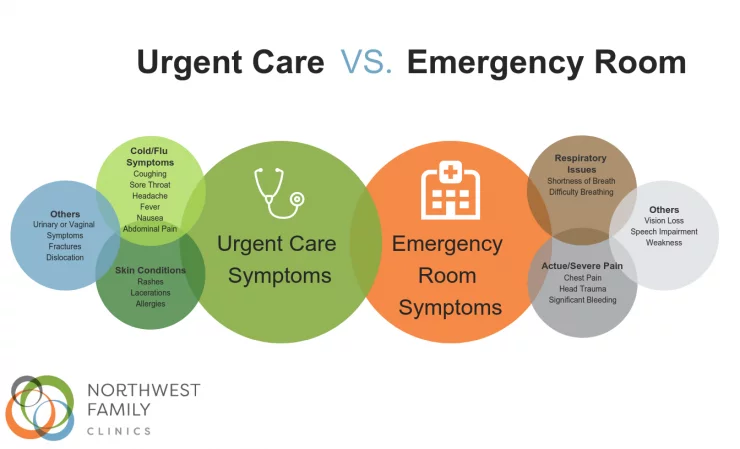By Kevin Hein PA-C
The decision to visit the local urgent care or the emergency department is one of the many healthcare choices that can be difficult for patients to navigate. Medical problems that need immediate treatment are distressing and patients may be frustrated by their care if they choose incorrectly. We will explore the roles that urgent cares and emergency departments serve in caring for illnesses and injuries that require immediate attention.

When it comes to choosing the right acute care setting, there can be a wide range of services each may offer. Some urgent cares are setup to treat a wide range of conditions, while others may have limited capabilities. I always recommend either calling the clinic or reviewing their website to find out what services they offer. Here is a list of commonly treated conditions in the urgency setting:
• Cough/Cold Symptoms/Sore Throat
• Rashes
• Lacerations
• Fractures and dislocations
• Headache
• Nausea/Vomiting/Diarrhea/Abdominal Pain
• Fever
• Urinary or Vaginal Symptoms
• Allergies
Acute care providers receive training in a wide variety of acute conditions and are able to recognize conditions quickly and treat them efficiently. The wait times at an urgent care clinic are generally shorter than they are at an emergency department because the lower complexity of the presenting conditions and ability to treat patients more quickly.
The emergency department should be reserved for symptoms and complaints that require specialized evaluation and/or need immediate treatment to preserve life or limbs. The following symptoms/conditions should be evaluated in the emergency department.
• Chest Pain
• Trouble Breathing
• Vision Loss
• Weakness
• Significant bleeding
• Acute, Severe Pain
• Head Trauma
An emergency department is setup to evaluate and treat the most complex and emergent medical conditions. They often will have the capability to obtain advanced imaging (CT scan and MRI) and blood work quickly to diagnose conditions, as well as medications on-hand to treat patients.
Because an emergency department is tasked with treating complex and emergent conditions, they will often triage patients based on the severity of their condition. A common complaint is wait-times in the emergency department. If a patient’s condition is deemed to be of either low complexity or non-urgent, they may wait a long time to be seen by a doctor and treated. Many times, these patients might have had a better experience by visiting an urgent care clinic instead.
If you are unsure, as I stated earlier, calling your primary care clinic and asking about your symptoms is a good place to start. If you are evaluated in a clinic and the healthcare provider is unable to evaluate or treat your condition effectively, they will recommend referral to the emergency room. Learning to navigate this aspect of healthcare will result in optimum levels of care and satisfaction.